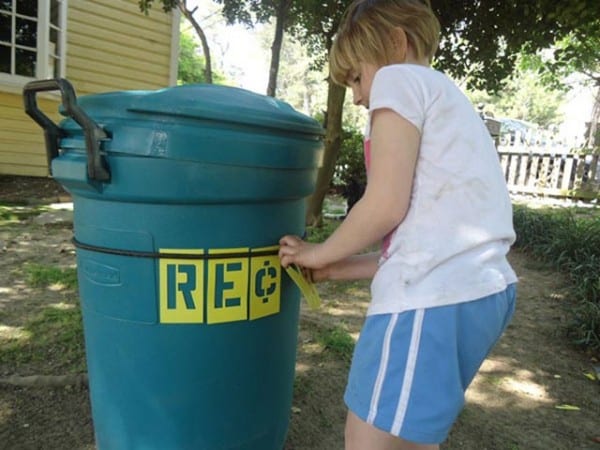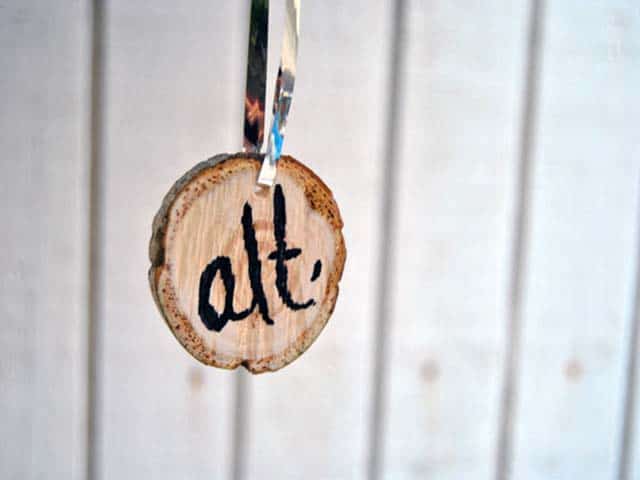Teaching children about the importance of recycling and being eco-friendly is more crucial than ever. One effective way to instill these values in the younger generation is through hands-on activities such as do-it-yourself (DIY) projects using recyclables.
Not only does this allow kids to have fun and express their creativity, but it also helps them understand the significance of responsible waste management. In this article, we will explore the world of eco-friendly crafting for kids, providing step-by-step guides and tips to engage children in sustainable practices from an early age.

Understanding the Importance of Recycling for Kids
Recycling is an essential concept for children to grasp, as it lays the foundation for a sustainable future. By recycling, they contribute to reducing waste, conserving natural resources, and minimizing pollution. However, it’s important to explain the broader impact of recycling in a way that resonates with kids.
The Role of DIY Projects in Teaching Recycling
DIY projects offer a hands-on approach to learning about recycling. When kids engage in crafting activities that involve recyclables, they witness firsthand how waste materials can be transformed into something new and useful. Through these projects, children learn to value the potential of discarded materials and develop a sense of responsibility towards the planet.
Imagine a group of children gathered around a table, armed with scissors, glue, and a collection of empty cardboard boxes, plastic bottles, and old magazines. As they dive into their DIY project, their excitement is palpable. Each child carefully selects the materials they want to work with, envisioning the possibilities that lie within those seemingly ordinary items.
One child decides to create a colorful pencil holder out of an empty tin can, carefully wrapping it with vibrant strips of recycled paper. Another child transforms a discarded cereal box into a stylish magazine holder, decorating it with cutouts from old magazines. As they work, their creativity blossoms, and they begin to see the potential in every piece of waste material.
Benefits of Eco-Friendly Crafts for Children
Engaging in eco-friendly crafts provides several benefits for children beyond the environmental aspect. Firstly, it fosters creativity by encouraging kids to think outside the box and come up with innovative ways to repurpose materials. Secondly, it nurtures problem-solving skills as children learn to adapt and find solutions when faced with limited resources. Lastly, eco-friendly crafts promote a sense of pride and accomplishment as kids witness the positive impact they can make through their creativity.
As children complete their DIY projects, a sense of satisfaction washes over them. They proudly display their creations, knowing that they have not only created something beautiful but also contributed to a greener planet. This sense of accomplishment boosts their self-esteem and instills in them a belief in their ability to make a difference.
Moreover, engaging in eco-friendly crafts opens up a world of possibilities for children. They begin to see waste materials not as trash, but as valuable resources waiting to be transformed. Their minds start to think creatively, constantly seeking new ways to repurpose and reimagine everyday items. This mindset extends beyond the crafting table and spills into other areas of their lives, as they become more conscious consumers and advocates for sustainability.
Materials You Can Recycle for DIY Projects
The beauty of eco-friendly crafting lies in the endless possibilities of materials that can be recycled. By exploring everyday objects and transforming them into something new, children develop a deeper appreciation for the world around them. Here are some common household items that can be repurposed for DIY projects:
Common Household Items for Recycling
- Plastic bottles
- Tin cans
- Newspapers and magazines
- Egg cartons
- Paper towel rolls
- Jars and containers
But wait, there’s more! In addition to these commonly recycled materials, there are a few hidden gems that you might not have considered. Take, for example, old CDs and DVDs. Instead of letting them gather dust in a forgotten corner, why not turn them into dazzling sun catchers or unique coasters? Their reflective surfaces can add a touch of sparkle to any DIY project.
Another surprising material that can be repurposed is wine corks. Instead of tossing them in the trash, save them up and create a one-of-a-kind bulletin board or a stylish trivet for your kitchen. Not only will you be reducing waste, but you’ll also have a functional and eye-catching piece to showcase.
Safety Precautions When Using Recycled Materials
While DIY projects with recyclables are a fantastic way to teach sustainability, it’s essential to prioritize safety. Adult supervision is crucial, especially when sharp objects or potentially hazardous materials are involved. It’s also advisable to clean and sanitize materials before starting any project to avoid any health risks.
Additionally, when working with certain materials such as glass or metal, wearing protective gloves and goggles can provide an extra layer of safety. It’s important to educate children about the potential risks and ensure they understand the importance of taking precautions.
Step-by-Step Guide to Eco-Friendly DIY Projects
Now that we have a basic understanding of recycling and the materials we can use, let’s dive into some exciting eco-friendly DIY projects that will engage kids’ creativity and teach them valuable lessons about waste management. These projects are simple, require minimal supplies, and are suitable for various age groups:
Project 1: Recycled Paper Beads
Making paper beads from old magazines or newspapers is a fantastic way to introduce kids to the world of upcycling. Not only does it give new life to discarded paper, but it also allows children to explore their artistic side. The process of creating paper beads is not only fun but also a great opportunity to learn about shapes and patterns.
Here’s how you can do it:
- Tear pages from a magazine or newspaper into long triangular strips. Encourage kids to choose pages with vibrant colors or interesting images.
- Start rolling the wide end of a strip tightly, moving towards the narrow end. As the strip takes shape, children can experiment with different rolling techniques to create beads of varying sizes and textures.
- Apply a small amount of glue to seal the bead at the end. This step not only secures the bead but also adds a glossy finish.
- Allow the beads to dry completely before stringing them into bracelets or necklaces. Kids can get creative with their designs, mixing and matching different bead sizes and colors to create unique pieces of jewelry.
Project 2: Tin Can Planters
Transforming tin cans into planters not only encourages recycling but also sparks kids’ interest in gardening. It’s a wonderful opportunity to teach them about the importance of plants in our ecosystem and how they contribute to cleaner air. Plus, growing their own herbs or flowers gives children a sense of responsibility and accomplishment.
Follow these steps to create these adorable mini planters:
- Clean and remove any labels from the tin can. This step is crucial to ensure the safety of the plants and prevent any potential contamination.
- Using a hammer and a nail, make drainage holes in the bottom of the can. Proper drainage is essential for the health of the plants, as it prevents waterlogging and root rot.
- Paint the can with non-toxic acrylic paint and allow it to dry. Kids can let their imagination run wild, choosing their favorite colors or even creating intricate designs.
- Add potting soil and plant small herbs or flowers in the can. Encourage children to research the specific needs of the plants they choose, teaching them about the importance of sunlight, water, and nutrients.
Project 3: Plastic Bottle Bird Feeder
Building a bird feeder from a plastic bottle provides a wonderful opportunity for kids to observe nature while reusing materials that often end up in landfills. It not only attracts beautiful birds to your backyard but also helps sustain their population by providing a reliable food source. Children can learn about different bird species, their feeding habits, and the importance of biodiversity.
Here’s how you can make it:
- Take an empty plastic bottle and cut out a small rectangle on one side. This will serve as the feeding window, allowing birds to access the food inside.
- Poke two holes near the top of the bottle. These holes will be used to hang the bird feeder securely.
- Insert a wooden dowel or sturdy stick through the holes to serve as a perch. Birds need a comfortable spot to rest while they enjoy their meal.
- Fill the bottle with birdseed and hang it from a tree branch or railing. Make sure to place it in a location that is easily visible from a window, allowing children to observe the birds’ visits.
These eco-friendly DIY projects are not only a great way to spend quality time with kids but also instill in them a sense of responsibility towards the environment. By engaging in hands-on activities that promote recycling and upcycling, children develop a deeper understanding of the impact of their actions and learn to appreciate the beauty of sustainability.
Tips for Making Recycling a Regular Habit
In addition to engaging children in DIY projects, there are several strategies to cultivate a habit of recycling and sustainability in their everyday lives:
Involving Kids in Household Recycling
Assign specific roles to kids in the recycling process, such as sorting different recyclable materials or taking responsibility for ensuring bins are properly labeled. By involving children in these tasks, you instill a sense of ownership and make recycling a collective effort.
Making Recycling Fun and Educational
Organize recycling challenges, such as creating a recycling-themed board game or hosting a mini recycling competition within the family. By turning recycling into a game, kids will be more engaged and motivated to participate actively in sustainable practices.
The Impact of Eco-Friendly Activities on Kids
Engaging children in eco-friendly activities has profound effects on their development, both personally and environmentally:
Developing Responsibility and Awareness
Through recycling and eco-friendly crafts, kids learn to take responsibility for their actions and understand the long-term consequences of their choices. They become aware of the impact of their daily habits on the environment and develop a sense of obligation to protect it.
Fostering Creativity and Problem-Solving Skills
Eco-friendly activities encourage kids to think creatively and find innovative solutions to repurpose materials. They learn to analyze challenges, experiment, and adapt, fostering problem-solving skills that can be transferrable to various aspects of their lives.
By immersing children in the world of eco-friendly crafting, we not only teach them about waste management but also empower them to become advocates for a sustainable future. Encouraging their creativity and nurturing their sense of responsibility will ensure that they carry these values throughout their lives, making a lasting positive impact on the planet.



